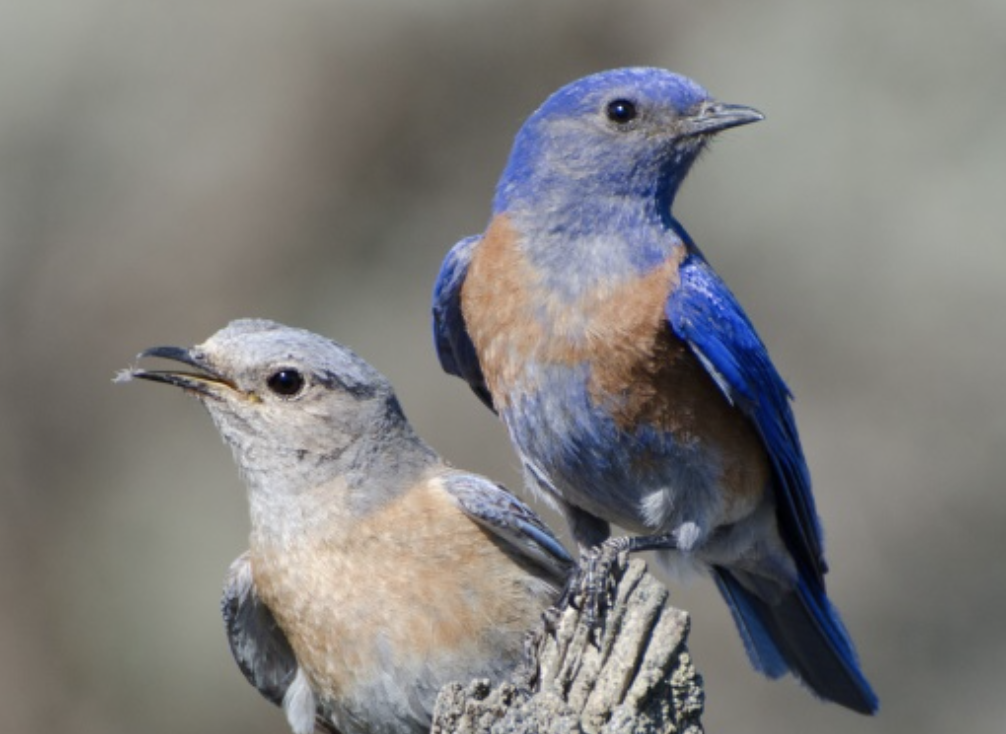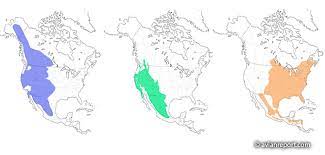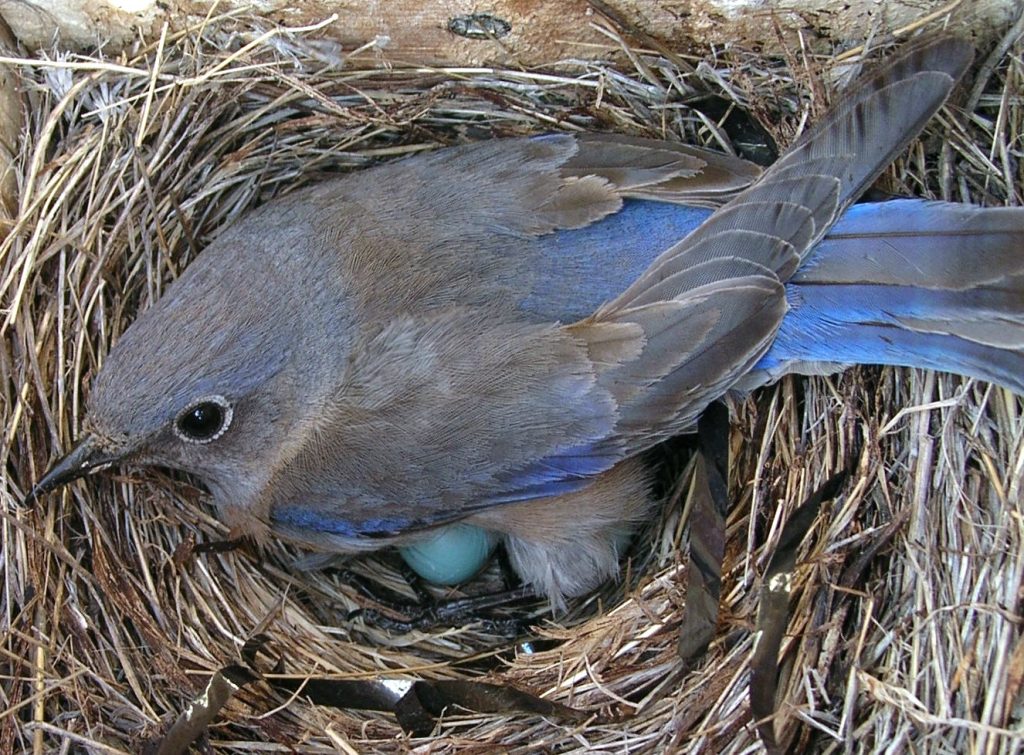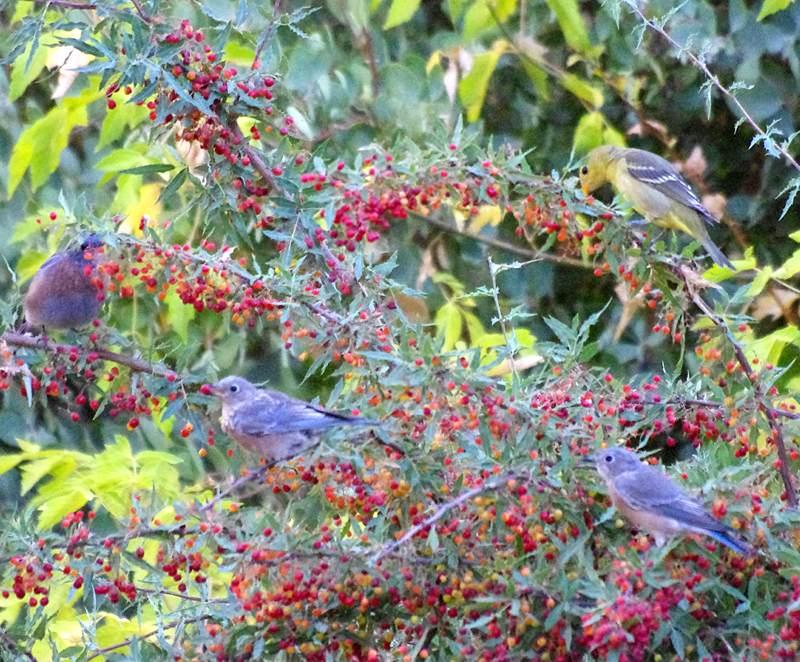Western Bluebirds, an Example of Natal Philopatry

Western Bluebirds Male & Female
Photo Credit – National Geographic
The number of Western Bluebirds fluttering and dropping to the ground in search of insects appears to have dramatically increased this fall around the golf course I use here in northern California. What is going on, I ask?
First, an introduction to Bluebirds. There are three species in North America: the Eastern, the Mountain, and the Western; some are resident and some migrate. The northern populations head south for winter. The Eastern is the most common and is found east of the Rockies; the Mountain Bluebird lives high in the Rockies, as far north as Alaska and the Yukon and east into Oklahoma, Kansas, and Nebraska. The Western Bluebird is restricted to the Pacific Northwest and down to the southern Rocky Mountains and Mexico. Western Bluebirds in the south tend to be year-round residents. All three species are members of the thrush family.

Mountain Bluebird Western Bluebird Eastern Bluebird
Bluebird Range Map
Photo Credit – Avian Report
The Western Bluebird is the dominant species that forages across my Bay Area golf course. Their plumage is a brilliant royal blue across their top half, they have a rusty brown-red neck and upper breast, and their lower breast is gray. The plumage on the female is duller, and both genders are slightly smaller than an American Robin. They forage by sitting and waiting on low-to-the-ground perches, inspecting beneath them for insects, and then swoop down to catch their prey. Nesting takes place in tree cavities and artificial nest boxes, but they also have to compete with other cavity-nesters such as starlings, certain swallows, and wrens for this right to occupy a nesting site. Their breeding habitat includes open woodlands, ranch environments, and streamside groves, but the winter habitat expands to include oak and riparian woodland, coastal chaparral, and pasture fields. Their summer diet is mainly insects, but in winter its food expands to include berries such as grapes, mistletoe, and poison oak.

Western Bluebird Nesting
Photo Credit – Pacific Bird
Philopatry is the tendency of creatures to remain or habitually return to where they were born. Natal refers to the bird’s birthplace. It appears that mother Bluebirds can affect the everyday behavior of their male chicks while their offspring are still in the egg. They allocate different levels of testosterone and related hormones into the eggs, dependent on the competitiveness of the environment in which they have lived. If there is little competition for breeding and foraging, stay-at-home sons are born. When the reverse exists, more hormones are added, and the male chicks become more aggressive and more likely to disperse away from home.

Western Bluebird Diet of Berries
Photo Credit – Las Pilitis Nursery
The life span of a Bluebird is around four years, and its clutch size is around 2 to 8 eggs, a situation that appears to encourage growth in population. Where I play golf, there are plenty of oak trees and open “pastures”, and I rarely see starlings who might compete with them. There are plenty of Acorn Woodpeckers to create new nesting sites. Maybe this is what is going on. Additionally, the numbers may be influenced by the arrival of migrating birds from the north during the fall.
The overall population of the Western Bluebird has held steady during recent years and the species is of “low concern” from a conservation perspective. The expansion of grazing land, the removal of dead trees, predation from cats and rodents, and the effect of non-native plants are the primary risks to their numbers.
During my early days of bird-watching in Europe, Bluebirds were not a species I saw. The closest to these species was listening to Vera Lynn sing There’ll Be Blue Birds over the White Cliffs of Dover. Written by two Americans in 1941, it appears that neither the composer nor the writer were aware that bluebirds did not live in Britain. However, the song became, and still is, a British favorite.

Bluebirds over the White Cliffs of Dover



